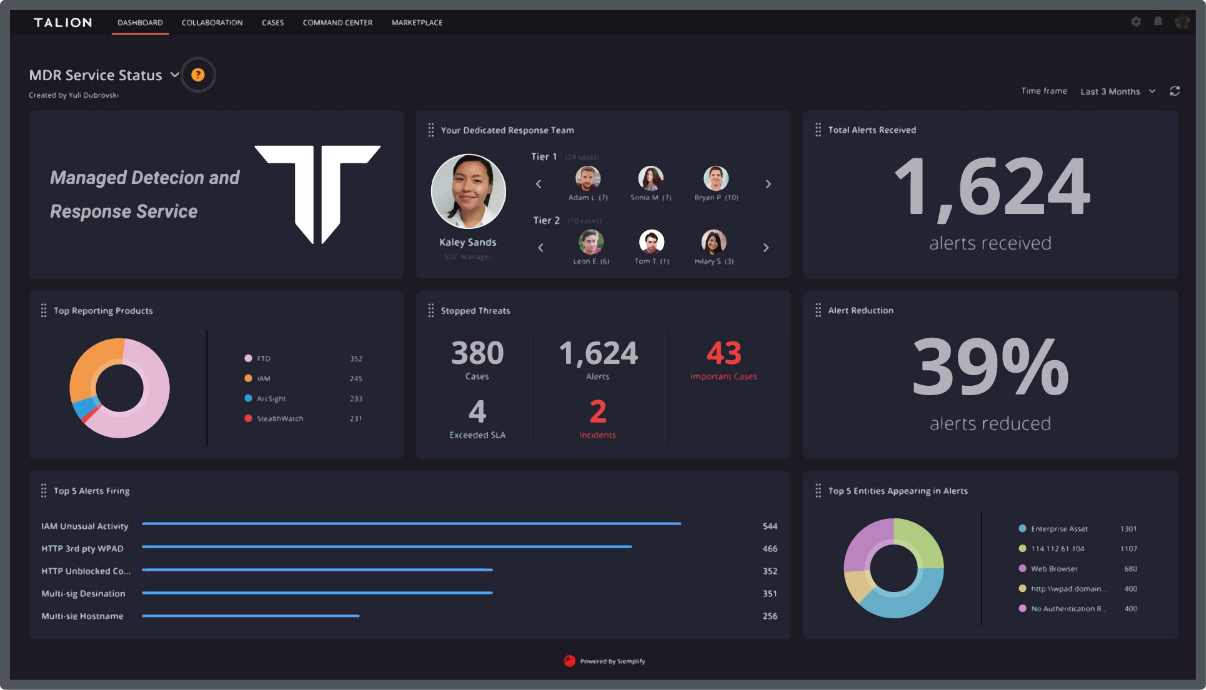How aligned is your cyber security strategy with the board?
As a CISO, you’re on the firing line, responsible for what technology and processes are in place to keep your business from cyber disruption, but budget allocation isn’t always enough and the C-Suite may not understand the extent of the threats your business faces.
In this article, we discuss how you can reevaluate your approach to cyber security to make immediate positive change and achieve the board level understanding and investment you’ve been looking for.
Traditional risk management in many companies has largely focused on financial and operational risks, often sidelining cyber security. However, the landscape has evolved, and cyber risks have become more significant and complex. In Q1 of this year alone, cyber-attacks increased by 7% compared to the same period in 2022. To address this, it is essential to redefine risk management by acknowledging that cyber threats are not just IT issues, but strategic business risks.
Identify Critical Assets: As a CISO, identifying the critical digital assets of your company is highly important. These might include customer data, intellectual property, or operational systems. This is the first step towards effective risk management, because by hyper-focusing on key areas of risk, you will protect those assets that matter most to the business.
Assess Vulnerabilities: Many security teams put the right processes and systems in place, but the biggest risk is that often these aren’t tested. As a result, conducting thorough vulnerability assessments and penetration tests shouldn’t be overlooked, as they uncover vital weaknesses in your digital infrastructure and show where you are most exposed to cyber threats.
Cyber Insurance: Whilst cyber insurance is not a replacement for a robust cyber security strategy, it can be worth investing in to mitigate financial losses in the event of a breach.
Cyber threats are changing day in and day out and businesses can’t protect against them stuck in a rigid black box solution. At Talion, a tailored cyber strategy is key to our customer delivery, but there are ways you can achieve this approach internally and immediately first.
Risk Mitigation Strategy: Develop a comprehensive risk mitigation strategy that is aligned with your company’s business goals. This strategy should include technological, operational, and human-focused measures.
Incident Response Plan: Craft an incident response plan that outlines the steps to be taken in the event of a breach. A well-prepared response can significantly reduce the damage caused by a cyber-attack.
Cyber Security Training: Invest in ongoing training and awareness programs for employees. Human error is a leading cause of cyber incidents, and an educated workforce can be your first line of defense.
The board of directors plays a pivotal role in shaping a company’s cyber security posture. To get their buy-in, it is crucial to communicate the importance of cyber security effectively.
Educate the Board: Start by educating the board on the current cyber threat landscape and the potential impact of a breach on the company’s reputation, finances, and legal standing. Investing in Executive Cyber Briefings can be a good method forward, as an external Threat Intelligence consultant can speak directly to the C-Suite on a bespoke set of cyber topics.
Regular Updates: Provide the board with regular updates on cyber security measures, incidents, and the effectiveness of the risk management strategy. Transparency builds trust, and if they know what’s at stake, you can gain better buy-in.
Budget Allocation: It’s not always easy to engage your C-Suite and secure the cyber security budget you need. Educate the board on why the funding is critical and how underfunded efforts can leave a business vulnerable.
Resilience in the face of cyber threats is not solely dependent on technology – the ability to adapt and recover from disruptions is vital.
Testing and Drills: Never assume your colleagues know what to do in a crisis. Regularly test your incident response plan with tabletop exercises and simulated cyberattack scenarios to evaluate and refine your mitigation tactics.
Data Backup and Recovery: Implement robust data backup and recovery systems. In the event of a ransomware attack, having secure backups can prevent the loss of critical data. Don’t just implement them – test them.
Cyber Security Culture: You may feel like cyber security understanding doesn’t stretch far beyond your own team and it’s hard to do so, but fostering a cybersecurity-aware culture within your business is key – not just within the C-Suite, but all managers and teams. Encourage employees to report suspicious activities and make security a part of everyday operations.
Cyber security is no longer just an IT problem, but a strategic business issue that needs to be addressed at the board level. By redefining risk management, building a tailored strategy, gaining board buy-in, and boosting internal cyber resilience, CISOs can better define key risk areas of the business and provide greater understanding to the C-Suite on how to mitigate cyber risk with maximum impact. No more lack of clarity or misaligned budget.
The commitment to cyber security can make all the difference in safeguarding a company’s future – speak to Talion today to discuss your cyber strategy.

Call us directly and we’ll put you in touch with the most relevant cyber expert.
Not currently free to call? Give us a brief description of what you’re looking for by filling out our form and we’ll email you as soon as we can.
